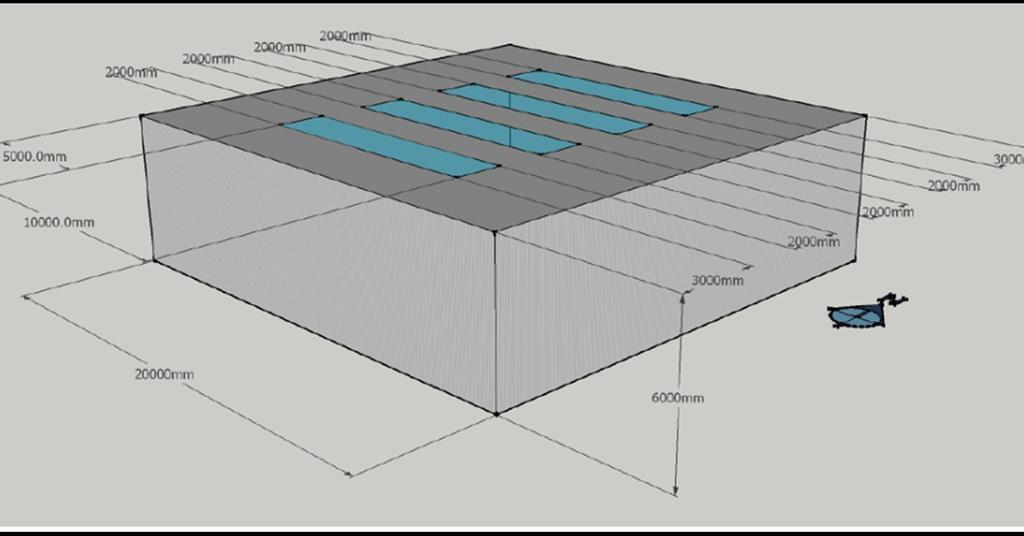
- IES VE CRITERION 3 FULL
- IES VE CRITERION 3 SOFTWARE
How does it happen that you start remembering (EVENT)?

In the past month, have you had any unwanted memories of (EVENT) while you were awake, so not counting dreams?
Criterion G is met (disturbance causes either clinically significant distress or functional impairment).  Criterion F is met (disturbance has lasted one month). A symptom cluster score may also be calculated for dissociation by summing items 19 and 20. Similarly, CAPS-5 symptom cluster severity scores are calculated by summing the individual item severity scores for symptoms corresponding to a given DSM-5 cluster: Criterion B (items 1-5) Criterion C (items 6-7) Criterion D (items 8-14) and, Criterion E (items 15-20). CAPS-5 total symptom severity score is calculated by summing severity scores for the 20 DSM-5 PTSD symptoms. Briefly, the assessor combines information about frequency and intensity of an item into a single severity rating. General instructions and scoring information are included with the CAPS-5.ĭetailed scoring information is included with the CAPS-5 and should be reviewed carefully before administering. However, CAPS-5 items are rated with a single severity score in contrast to previous versions of the CAPS which required separate frequency and intensity scores. As with previous versions of the CAPS, CAPS-5 symptom severity ratings are based on symptom frequency and intensity (except for amnesia and diminished interest which are based on amount and intensity). CAPS-5 asks questions relevant to assessing the dissociative subtype of PTSD (depersonalization and derealization), but no longer includes other associated symptoms (e.g., gaps in awareness). The language of the CAPS-5 reflects both changes to existing symptoms and the addition of new symptoms in DSM-5. CAPS-5 is a 30-item questionnaire, corresponding to the DSM-5 diagnosis for PTSD. CAPS-5 requires the identification of a single index trauma to serve as the basis of symptom inquiry. CAPS for DSM-IV asked respondents to endorse up to three traumatic events to keep in mind during the interview. Several important revisions were made to the CAPS in updating it for DSM-5:
Criterion F is met (disturbance has lasted one month). A symptom cluster score may also be calculated for dissociation by summing items 19 and 20. Similarly, CAPS-5 symptom cluster severity scores are calculated by summing the individual item severity scores for symptoms corresponding to a given DSM-5 cluster: Criterion B (items 1-5) Criterion C (items 6-7) Criterion D (items 8-14) and, Criterion E (items 15-20). CAPS-5 total symptom severity score is calculated by summing severity scores for the 20 DSM-5 PTSD symptoms. Briefly, the assessor combines information about frequency and intensity of an item into a single severity rating. General instructions and scoring information are included with the CAPS-5.ĭetailed scoring information is included with the CAPS-5 and should be reviewed carefully before administering. However, CAPS-5 items are rated with a single severity score in contrast to previous versions of the CAPS which required separate frequency and intensity scores. As with previous versions of the CAPS, CAPS-5 symptom severity ratings are based on symptom frequency and intensity (except for amnesia and diminished interest which are based on amount and intensity). CAPS-5 asks questions relevant to assessing the dissociative subtype of PTSD (depersonalization and derealization), but no longer includes other associated symptoms (e.g., gaps in awareness). The language of the CAPS-5 reflects both changes to existing symptoms and the addition of new symptoms in DSM-5. CAPS-5 is a 30-item questionnaire, corresponding to the DSM-5 diagnosis for PTSD. CAPS-5 requires the identification of a single index trauma to serve as the basis of symptom inquiry. CAPS for DSM-IV asked respondents to endorse up to three traumatic events to keep in mind during the interview. Several important revisions were made to the CAPS in updating it for DSM-5: IES VE CRITERION 3 FULL
The full interview takes 45-60 minutes to administer. The CAPS was designed to be administered by clinicians and clinical researchers who have a working knowledge of PTSD, but can also be administered by appropriately trained paraprofessionals. The Life Events Checklist for DSM-5 (LEC-5) is recommended in addition to the Criterion A inquiry included in the CAPS-5. Administration requires identification of an index traumatic event to serve as the basis for symptom inquiry.

In addition to assessing the 20 DSM-5 PTSD symptoms, questions target the onset and duration of symptoms, subjective distress, impact of symptoms on social and occupational functioning, improvement in symptoms since a previous CAPS administration, overall response validity, overall PTSD severity, and specifications for the dissociative subtype (depersonalization and derealization).įor each symptom, standardized questions and probes are provided.
Assess PTSD symptoms over the past week. Make current (past month) diagnosis of PTSD. The CAPS-5 is a 30-item structured interview that can be used to: 
The CAPS is the gold standard in PTSD assessment. To Obtain Scale CAPS-5 Clinician Training Information
IES VE CRITERION 3 SOFTWARE
VA Software Documentation Library (VDL).Clinical Trainees (Academic Affiliations).War Related Illness & Injury Study Center.








 0 kommentar(er)
0 kommentar(er)
